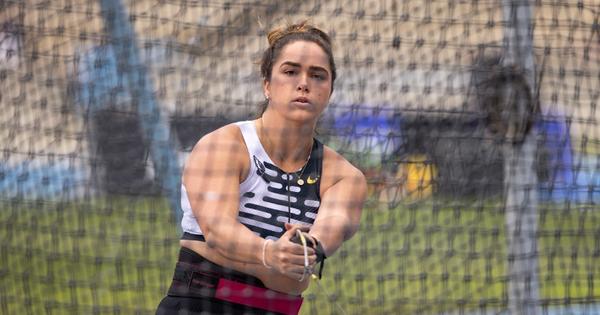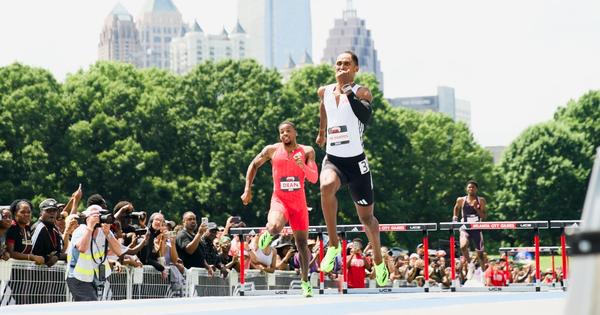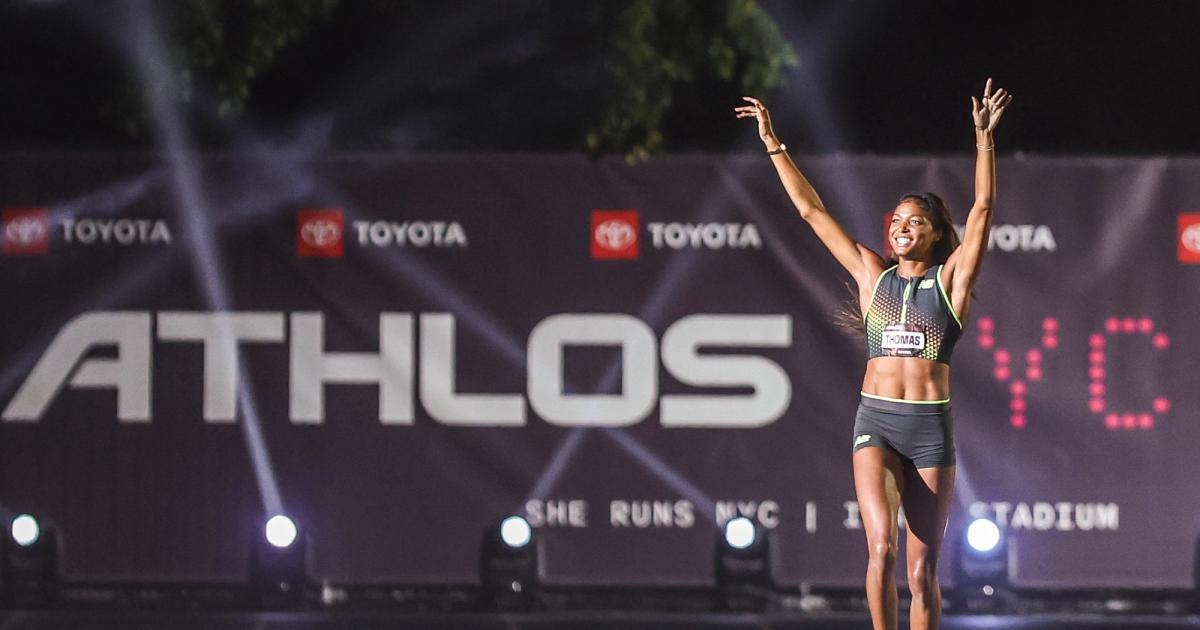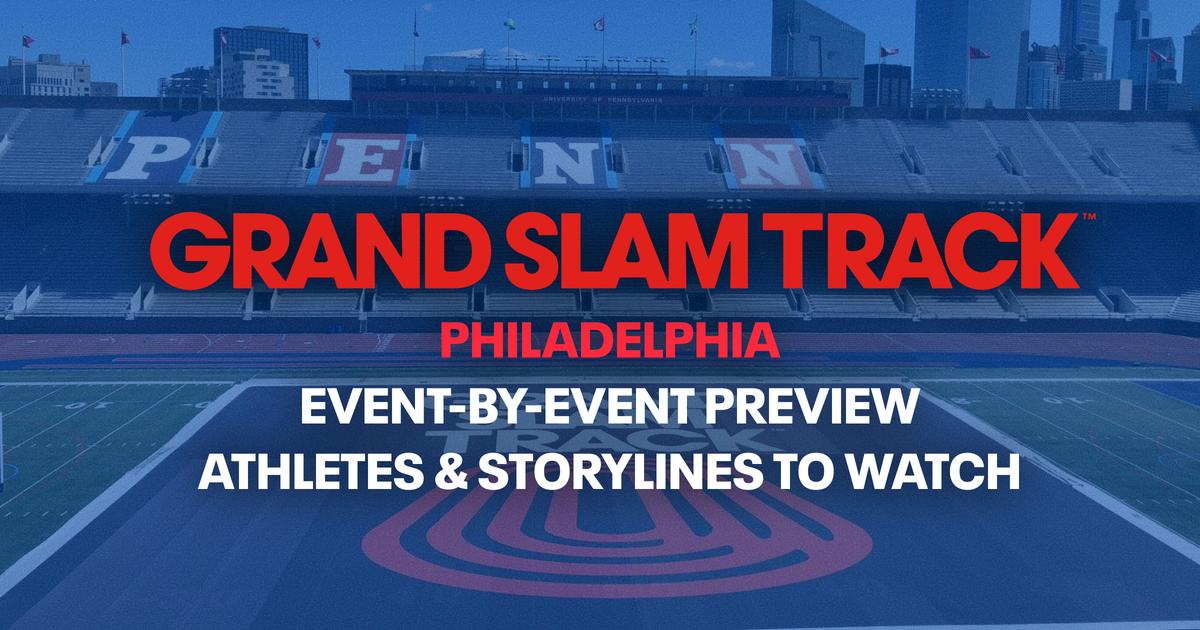By Paul Snyder
May 29, 2025
When Grand Slam Track crossed the threshold from “just a glimmer in Michael Johnson’s eye” to a press-release-ready event series, it made waves both in and out of the track world.
Sports and sports-business publications ran headlines about GST’s comparatively massive prize offerings. But the track and field world became fixated on the format of the meets themselves, and notably, how field events were not part of the league’s streamlined, made-for-television equation.
The response was mixed. Blasphemy, screamed the purists. No fair, yelled many of the field eventers themselves. I’ll just make my own thing, nodded Ryan Crouser, sagely.
As for us? We’ve long advocated for a more purposeful approach to the global track and field calendar here at The Lap Count. If there are fewer high-quality meets on a given weekend, then we’ll see the sports biggest stars face off more often. If there’s a more clearly-defined season, then that bolsters the significance of the postseason. And after this past weekend, we’ll even add the following take to the pile: event-specific meets are great for the regular season.
Grand Slam Track serves as an excellent example of a racing-first, overall track showcase, where multiple event categories are highlighted and the sport’s biggest stars can vie for huge paydays and high-profile wins. The Diamond League offers similarly established athletes competitive and earning opportunities, often in rabbited settings with globally elite fields.
But the fact remains that for North American-based athletes in particular, GST and the Diamond League alone don’t check every box. Distance runners based out of Flagstaff—even those who can secure a coveted starting line spot on the DL circuit—probably aren’t too keen to schlep halfway across the world to shore up their world rankings or nab a World standard. Field event stars want to bolster their season’s resumes as well, and would generally like more fan support than the non-Mondos among them routinely get at full track and field meets.
Then there’s the fact that each event group prefers different atmospheric conditions. A hot, humid, just-a-touch windy Floridian afternoon makes for lousy 5000m weather, but to a 200m specialist, that’s the gold standard. A perfectly calm, 60º California evening might make for hamstring-tweaking circumstances for a 110m hurdler, but that’s exactly what anyone racing over 800m dreams about. And for the throws? Well, it’s safe to say that what they want—a wind-swept field in rural Oklahoma—is pretty unique in the sport, as well.
We don’t suggest going nuts and hosting dozens of events that pander to high-level performers in each event category. (While the focus of these narrow-focused meets is typically on marks, we still want to force top-tier talent to compete!) But what we do condone is more or less the ecosystem that’s naturally emerged as we enter the Grand Slam era: a handful of really well-executed, event-specific meets sprinkled throughout the regular season, that give athletes their shot to ensure they’re where they need to be ahead of national championships and fans of specific events a chance to spend a day totally immersed in them.
Track Fest, put on by Sound Running at Los Angeles’s Occidental College this past weekend, is just one stellar example of the format, though it’s hardly new. With only four events on the docket—800m, 1500m, 5000m, and 3000m steeplechase—and just a few heats of each, it makes for a relatively compact schedule despite no single individual race being all that short. And the result is a well-attended meet where world-beaters like Jake Wightman (3:35.26 1500m) can get a rep or two in, Olympic medalists like Kenneth Rooks (8:14.25 SC) can knock out the Tokyo ‘25 standard, and unheralded rising stars like Eduardo Herrera (12:58.57 5000m) get to be the hero of the meet.
Meanwhile, a little ways east in Tucson, Arizona, USATF Throws Fest (we are open to workshopping these names, but hey, at least they’re descriptive) showcased what a field-only meet can look like. Basically, in this configuration, jumps serve as undercard events for the big show: the throws. But more specifically, everything existed to support the headlining event, which was women’s hammer, and how often can you truthfully say that? The cage was electric.
We had six of the current top-15 hammer throwers in the world in one event: Brooke Anderson (2022 World champion); Janee' Kassanavoid (2023 World silver medalist); Annette Echikunwoke (2024 Olympic silver medalist); Erin Reese (2024 U.S. indoor champ in the weight throw); Rachel Richeson (2025 U.S. indoor champ in the weight throw); and DeAnna Price (2019 World champion). Anderson prevailed, hurling the hammer 79.29m, but you know who really won? Fans of the hammer who made the trip to the University of Arizona’s Roy P. Drachman Stadium and were treated to one of the greatest domestic throws competitions in recent memory.
While these niche meets look to be a hit with athletes and fans, other, more conventional North American, full-meet offerings—like the LA Grand Prix, the Bermuda Games, and now the NYC Grand Prix—are falling by the wayside. The reality is, a full track meet that fields most disciplines, even limiting entry to the best of the best, tends to run long. It can make for clunky television because you’re cutting back and forth between in-action events constantly, and having to educate viewers about the strategies and history of 40-something distinct competitions.
Parts of the GST model (giant paychecks) can’t always be replicated, but others (short programs, series-style competition) can be adapted. Maybe the next version of a Sound Running distance series holds three or four races with the same competitors but does allow rabbits. Maybe an enterprising field event organizer holds a multi-day meet, but entrants simply contest the same event twice.
Jeff Merrill of TRACKLND wrote a phenomenal scene report on Crouser’s World Shot Put Series’s second event, which took place as part of a strength-based exhibition in South Carolina. Crouser has long maintained that the throws can thrive as spectator events when paired with other strongman-type sports, and from the sound of it, he’s spot on. Who’s to say the same wouldn’t hold true for a 100m dash held at a Formula-One race? Both events are all about speed and pushing the limits, and we’re sure fancy watches abound. Why not hold the oft-maligned 10,000m in conjunction with a high-profile cycling crit race?
No matter how far you want to crank the dial in the direction of “discipline-specialized events,” the movement feels inevitable. And if the one problem keeping track and field from reaching the masses turns out to have been “there’s just too much stuff in there” this entire time, then we welcome the push.

Paul Snyder
Paul Snyder is the 2009 UIL District 26-5A boys 1600m runner-up. You can follow him on Bluesky @snuder.bsky.social.




